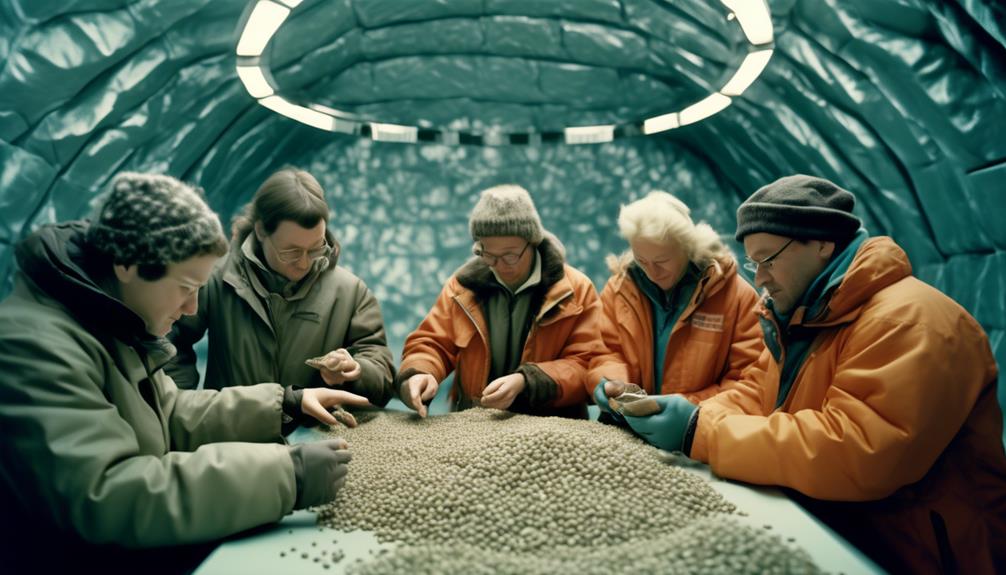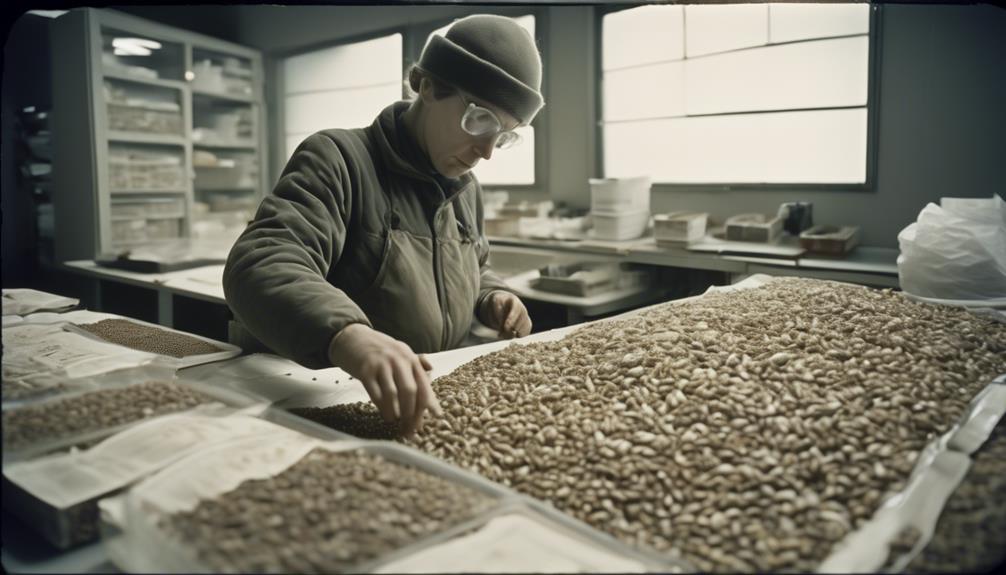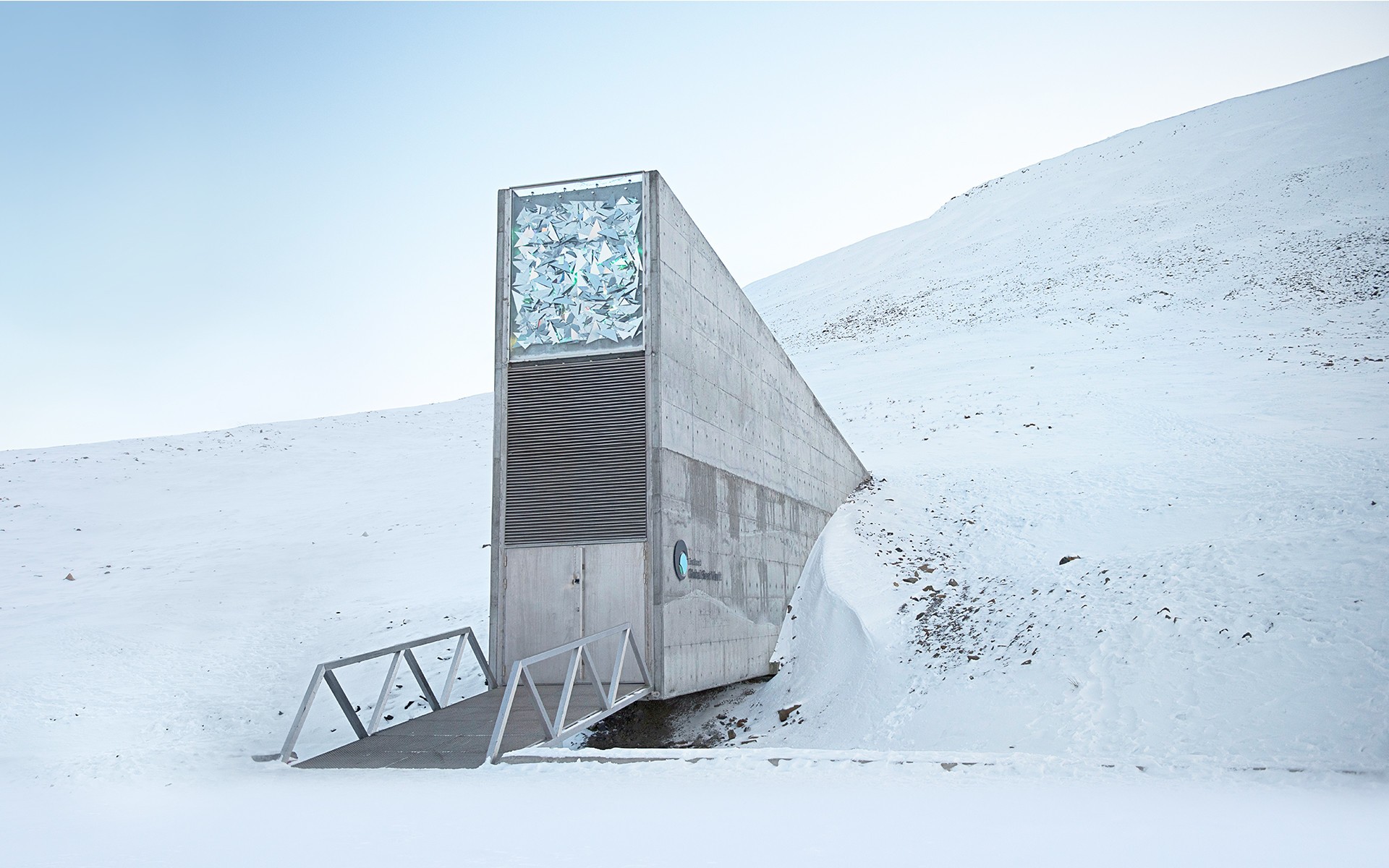Nestled within the icy heart of Svalbard, the Svalbard Seed Vault stands as a sanctuary for the world’s crop diversity, a hidden gem in the frozen wilderness. Its unassuming exterior belies the precious treasure it safeguards, a testament to the critical importance of preserving our agricultural heritage.
But what lies within the depths of this vault, and why is it considered a global lifeline? Prepare to be captivated by the secrets and significance of the Svalbard Seed Vault as we embark on a tour into its storied chambers, where the fate of our future food security hangs in delicate balance.
Worlds Biggest Seed Vault…
- The Svalbard Seed Vault is located in Svalbard, Norway and was built to safeguard the world’s crop diversity.
- The Seed Vault stores duplicate samples of seeds from around the globe, protecting against the loss of biodiversity and ensuring food security for future generations.
- The Seed Vault is built inside a mountain and benefits from permafrost conditions, providing natural freezing for long-term storage. It also has multiple layers of security to protect the seeds and can withstand natural disasters and climate change.
- Seed diversity is crucial for food production and adaptation to changing conditions. The Seed Vault acts as a backup for other seed banks worldwide and helps preserve rare and endangered species.
Purpose and Location

The purpose of the Svalbard Seed Vault, located in Svalbard, Norway, is to safeguard the world’s crop diversity by storing duplicate samples of seeds from around the globe.
The history of the Seed Vault dates back to 2004 when discussions began on the need for a global seed bank. Funding for the project came from multiple sources, including the Norwegian government, the Global Crop Diversity Trust, and the Nordic Genetic Resource Center.
Construction of the Seed Vault began in 2006 and was completed in 2008. The total cost of the project was approximately 9 million USD. The Norwegian government covers the operational costs of the Seed Vault, ensuring its continued function as a vital resource for biodiversity preservation.
‘Did You Know? The Seed Vault is built deep inside a mountain and is designed to withstand natural and man-made disasters, including earthquakes and nuclear war.’
Design and Construction
After its completion in 2008, the Svalbard Seed Vault stands as a remarkable testament to the ingenuity and foresight of its designers and builders. The design and construction of the seed vault took into consideration sustainability measures and incorporated various architectural features.
Built inside a mountain, the vault benefits from the permafrost conditions, which provide natural freezing for long-term storage. This eliminates the need for energy-intensive refrigeration systems. The vault also features multiple layers of security to protect the seeds, including blast-proof doors and motion sensors.
Additionally, the vault is built to withstand natural disasters and climate change, with thick concrete walls and a waterproof entrance tunnel. These sustainable design choices and robust construction ensure the long-term preservation of the world’s crop diversity for future generations.
Importance of Seed Diversity

Seed diversity plays a crucial role in ensuring the resilience and adaptability of our global food supply. Preserving biodiversity is essential for maintaining a sustainable and productive agricultural system. Seeds contain genetic material that’s vital for breeding new varieties that can withstand changing environmental conditions and pests.
With climate change posing a threat to crop diversity, preserving a wide range of seeds becomes even more important. Seed banks, such as the Svalbard Seed Vault, play a significant role in safeguarding rare and endangered species. By storing duplicate samples from around the world, the vault acts as a backup for other seed banks and ensures that genetic resources are accessible to future generations.
The collaboration between countries and organizations in preserving crop diversity highlights the international effort to protect our global food security.
‘Did You Know? The Svalbard Seed Vault is often referred to as the ‘Doomsday Vault’ because it’s designed to protect the world’s seeds in the event of a global catastrophe.’
Seed Collection and Storage Process

To ensure the long-term preservation and accessibility of diverse seed samples, a meticulous collection and storage process is followed at the Svalbard Seed Vault. Seeds are collected from various sources, including gene banks and research institutions. Each seed sample is carefully documented and labeled to maintain accuracy and traceability.
Before storage, the seeds are dried and cleaned to remove any impurities.
They’re then placed in airtight and moisture-proof packages to protect them from external elements. The packages are stored at a constant temperature of -18 degrees Celsius, which helps to maintain the viability of the seeds.
This seed conservation technique ensures that the seeds remain viable for future use and guarantees the preservation of valuable genetic resources.’
Global Access and Collaboration
Global access and collaboration are essential components of the Svalbard Seed Vault’s mission to preserve and protect the world’s crop diversity.
Access to the seed vault is strictly regulated, with seed samples remaining the property of the depositing institutions. The vault follows access regulations that allow for the withdrawal of seeds in case of natural or human-made disasters.
The Svalbard Seed Vault actively encourages collaboration between countries and organizations to ensure diversity and accessibility. Through international partnerships, the seed vault serves as a symbol of cooperation in preserving crop diversity.
The vault’s mission is to safeguard the world’s crop diversity for future generations, and it achieves this by not only providing a secure storage facility but also by fostering a global network of collaboration and knowledge-sharing.
Tour The Seed Vault…
The Svalbard Seed Vault serves as an invaluable resource for preserving global crop diversity. Like a fortress nestled within the frozen heart of Svalbard, it stands as a beacon of hope for future generations, safeguarding the genetic material needed to adapt and ensure food security in the face of climate change and other threats. Its impenetrable walls and collaborative efforts symbolize the strength of international cooperation in the crucial mission of preserving seed diversity.
You Might Also Like: How to Start a Seed Bank & Why Every Gardener Needs One

